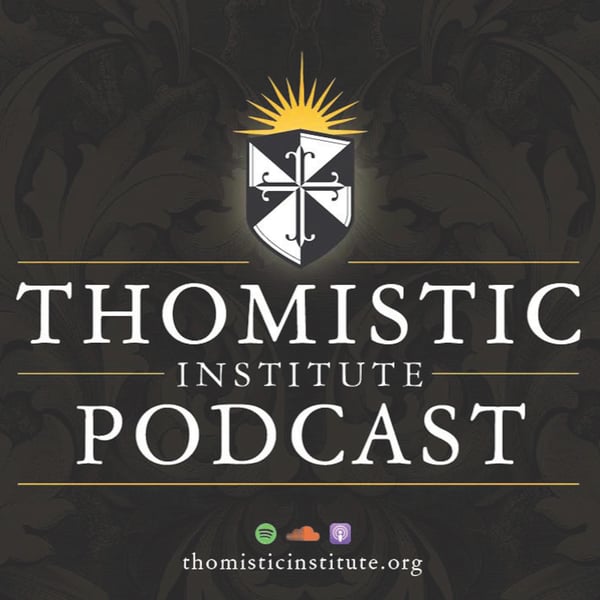The Ontological Status of Light and Color in St. Thomas Aquinas | Prof. John Boyer
The Thomistic Institute
The Thomistic Institute
4.8 • 729 Ratings
🗓️ 7 October 2024
⏱️ 46 minutes
🧾️ Download transcript
Summary
Professor John Boyer explores how St. Thomas Aquinas differentiated himself from Aristotle through arguing that light is not a body or spiritual entity, but an active quality of transparent mediums, enabling vision and color perception.
This lecture was given on July 18th, 2024, at The Dominican House of Studies.
For more information on upcoming events, visit us at thomisticinstitute.org/upcoming-events
About the Speaker:
John Boyer's training is in the History of Philosophy, specifically medieval Aristotelian scholasticism. His philosophical interests include issues in philosophy of science and philosophy of nature (e.g. causality, explanation, time, quantum physics), with an emphasis on their treatment in the Aristotelian-Thomistic tradition.
His current research focuses on Aristotle's philosophy of science (especially his theory of causal explanation) and how it was built upon by scholastic thinkers such as Albert the Great and Thomas Aquinas.
John is a Ph.D. Candidate in Philosophy at the Center for Thomistic Studies, University of St. Thomas (Houston). Prior to coming to Loyola, he taught philosophy at the University of St. Thomas (Houston). He earned an MA in philosophy at the Center for Thomistic Studies and a BA in liberal arts from Thomas Aquinas College (California).
Transcript
Click on a timestamp to play from that location
| 0:00.0 | Welcome to the Tomistic Institute podcast. |
| 0:06.8 | Our mission is to promote the Catholic intellectual tradition in the university, the church, and the wider public square. |
| 0:13.1 | The lectures on this podcast are organized by university students at Temistic Institute chapters around the world. |
| 0:19.1 | To learn more and to attend these events, visit us |
| 0:22.3 | at to mystic institute.org. All right. Well, the title of this talk could have easily |
| 0:29.2 | have been water, light, and color for St. Thomas, although the notion of ontological status, I guess, |
| 0:35.4 | is what sort of things, right? What kind of reality |
| 0:37.9 | do these things have? To begin, there's a lot of background to issues of the nature of light, |
| 0:45.8 | the nature of color, and they all primarily center if we go back to ancient philosophy on |
| 0:50.4 | theories of vision. I was originally planning to have a little kind of outline of various ancient theories of vision, |
| 0:56.0 | go into some details, but I was discovering that this was taking it too much time from actually getting to the real meat of the matter. |
| 1:02.5 | So I'll just give a brief overview summary. We have two basic schools of thought when it comes to vision among ancient thinkers. |
| 1:09.4 | We have the emission or extramission theory, which we find, for example, in Plato. |
| 1:15.5 | Plato thought that the eye was made out of fire. |
| 1:18.5 | Now, in the ancient world, there were thought to be four elements, as Professor Carl's |
| 1:22.9 | mentioned, the elements, right, the most basic constituents of things, earth, air, fire, |
| 1:26.8 | and water. And so the thought is, air, fire, and water. |
| 1:28.1 | And so the thought is that there is fire in the eyes. Why will you search, in the dark, |
| 1:33.1 | you see maybe the eyes of a cat gleam, right, or certain things along these lines? |
| 1:37.5 | And so the thought of Plato is that that fire sends light out from the eyes, and that |
| 1:43.3 | somehow comes in contact with the objects. |
| 1:46.0 | And so we make contact with the objects and we in a certain way by this light emission or these sight rays kind of feel the object. |
... |
Please login to see the full transcript.
Disclaimer: The podcast and artwork embedded on this page are from The Thomistic Institute, and are the property of its owner and not affiliated with or endorsed by Tapesearch.
Generated transcripts are the property of The Thomistic Institute and are distributed freely under the Fair Use doctrine. Transcripts generated by Tapesearch are not guaranteed to be accurate.
Copyright © Tapesearch 2025.

